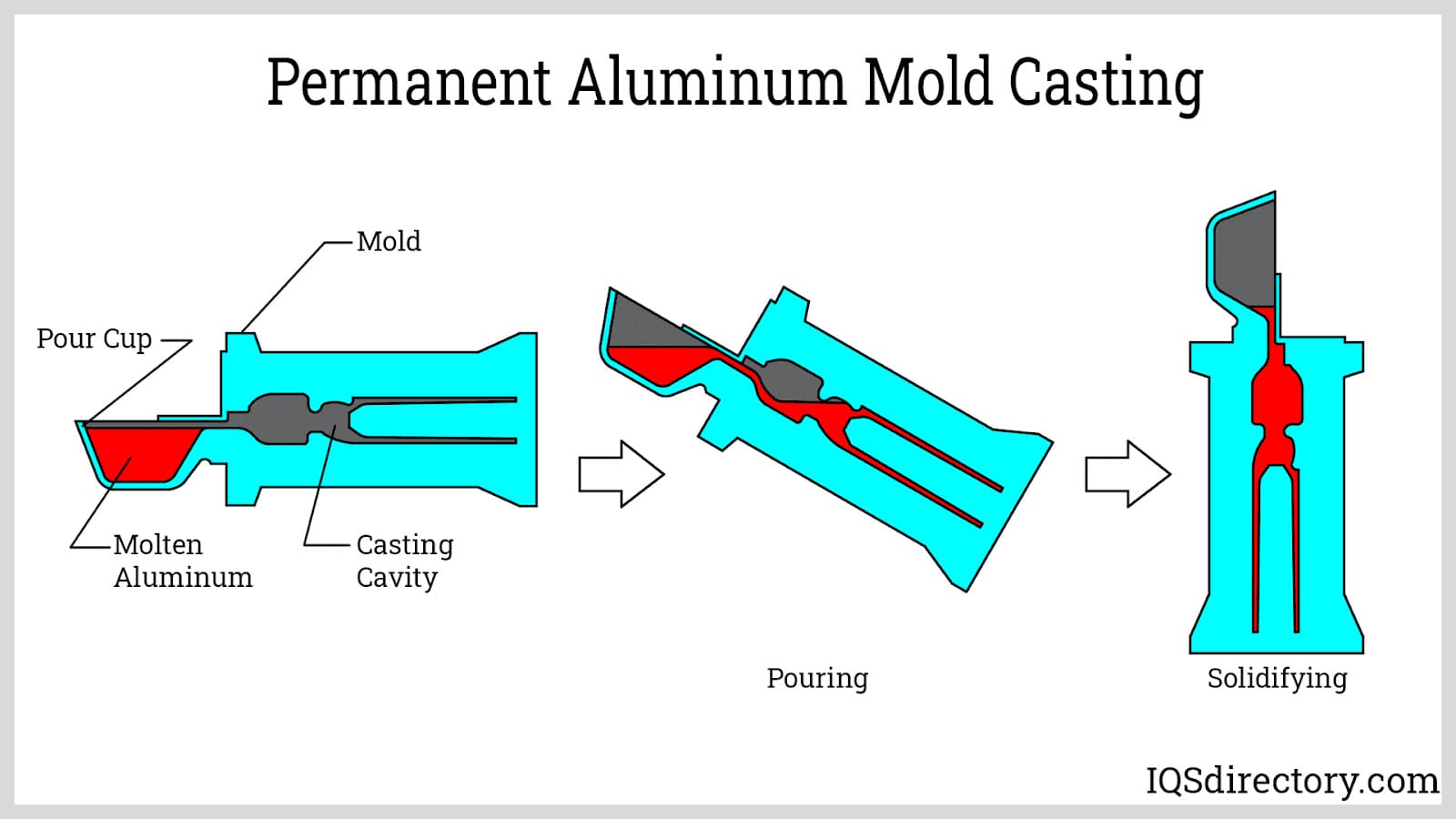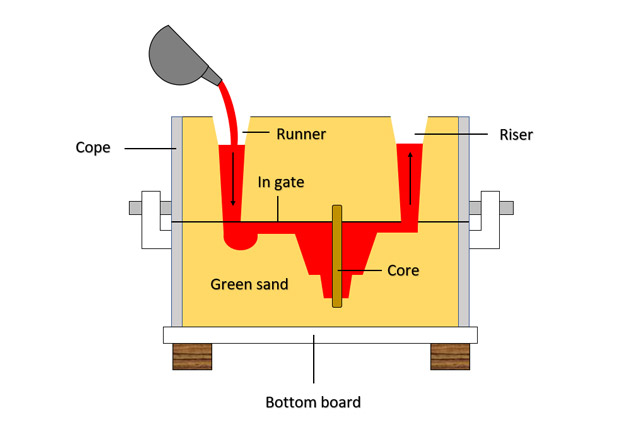What Does Stahl Specialty Company Do?
Table of ContentsThe smart Trick of Stahl Specialty Company That Nobody is Talking AboutOur Stahl Specialty Company DiariesSee This Report about Stahl Specialty CompanyThe 4-Minute Rule for Stahl Specialty CompanyRumored Buzz on Stahl Specialty CompanyIndicators on Stahl Specialty Company You Need To Know

If you're developing a steel product, you've likely considered utilizing aluminum as the base material. Pure aluminum has actually restricted applications, so it is frequently combined with various other elements, such as silicon, magnesium, and manganese to create alloys.
(AA), based in North America, has actually developed specifications that regulate aluminum alloys' composition, residential properties, and nomenclature. There are two kinds of aluminum alloys wrought and cast.
Examine This Report about Stahl Specialty Company
Cast aluminum alloys are made by thawing pure light weight aluminum and incorporating it with various other steels while in liquid form. The mix is put right into a sand, pass away, or financial investment mold and mildew.

The fourth number, which comes after the decimal factor, defines if the alloy is a casting (xxx. Wrought light weight aluminum alloys additionally begin by incorporating molten light weight aluminum with other metals. In contrast to cast alloys, nevertheless, they are created right into their last form via procedures such as extrusion, rolling, and flexing after the metal has solidified into billets or ingots.
There are numerous minor distinctions in between wrought and cast light weight aluminum alloys, such as that cast alloys can consist of extra substantial quantities of various other steels than functioned alloys. Yet one of the most noteworthy distinction in between these alloys is the construction process via which they will most likely to provide the end product. In addition to some surface area treatments, cast alloys will leave their mold and mildew in practically the specific solid kind wanted, whereas functioned alloys will undertake several modifications while in their solid state.
If you believe that a wrought alloy might be the most effective for your job, take an appearance at several of our short articles that describe more about certain wrought alloys, such as Alloy 6061 and Alloy 6063. On the other hand, if you think a cast alloy would certainly be better for you, you can learn more about some cast alloys in our Alloy 380 and Alloy 383 posts (coming quickly).
More About Stahl Specialty Company
When picking an aluminum foundry for your production requirements, it's essential to research several factors. One of the most vital aspects to think about is the experience and competence of the shop. aluminum foundry. Selecting a shop that has the appropriate expertise of the light weight aluminum casting process, and the profile to show for it, aids to have a successful outcome for your project
Having the experience and market expertise to craft your spreadings for ideal manufacturing and high quality outcomes will improve the project. Making light weight aluminum castings needs a complex collection of procedures to achieve the appropriate results. When selecting a new light weight aluminum factory to partner with, guarantee they have comprehensive market experience and are educated about all facets of the aluminum spreading process: style, manufacturing, product analysis, and product testing.
The foundry must also have a proven record of providing exceptional items that satisfy or go beyond customer expectations. Quality control needs to also be at the top of your list when choosing an aluminum foundry. By collaborating with a certified foundry who adheres to the criteria for quality assurance, you can protect the stability of your product and guarantee it fulfills your specs.
By selecting a firm that uses solutions that satisfy or surpass your product needs, you can be sure that your task will be completed with the utmost accuracy and effectiveness. Various parts require different production methods to cast light weight aluminum, such as sand spreading or die casting.
Not known Details About Stahl Specialty Company
Die casting is the name provided to the procedure of producing intricate metal elements through usage of mold and mildews of the part, likewise called passes away. The procedure uses non-ferrous steels which do not contain iron, such as light weight aluminum, zinc and magnesium, because of the desirable buildings of the steels such as low weight, higher conductivity, non-magnetic conductivity and resistance to rust.
Die spreading manufacturing is quickly, making high manufacturing levels of elements very easy. It creates more components than any various other procedure, with a high level of accuracy and repeatability. For more information concerning die casting and pass away casting products utilized at the same time, checked out on. There are three sub-processes that fall under the classification of die his comment is here casting: gravity pass away spreading (or permanent mold casting), low-pressure die spreading and high-pressure die casting.
No matter of the sub-process, the die casting procedure can be broken down right into 6 actions. After the purity of the alloy is examined, dies are created. To prepare the craves casting, it is important that the passes away are tidy, so that no deposit from previous productions stay. After cleansing, the ejection lubrication is put on the die to guarantee a smooth release.
Stahl Specialty Company Fundamentals Explained
The pure steel, additionally referred to as ingot, is included in the heating system and maintained the molten temperature level of the steel, which is then moved to the shot chamber and infused into the die. The stress is after that preserved as the steel strengthens. As soon as the metal solidifies, the cooling procedure starts.
(https://www.slideshare.net/franceshoward64061)
The thicker the wall of the part, the longer the cooling time due to the quantity of interior metal that additionally requires to cool. After the part is fully cooled down, the die cuts in half open and an ejection device pushes the component out. Adhering to the ejection, the die is shut for the following injection cycle.
The flash is the additional material that is cast throughout the process. This need to be trimmed off using a trim device to leave simply the main component. Deburring removes the smaller sized pieces, called burrs, after the trimming process. Finally, the component is polished, or burnished, to provide it a smooth coating.
See This Report on Stahl Specialty Company

Zinc is one of the most used alloys for die casting due to its lower price of raw materials. Its rust resistance also enables the components to be lengthy lasting, and it is one of the more castable alloys due to its lower melting factor.
As mentioned, this alloy is among one of the most typically used, yet manufactures will, sometimes, select light weight aluminum over zinc because of light weight aluminum's production advantages. Aluminum is extremely economical and one of the a lot more versatile alloys. Light weight aluminum is made use of for a number of different products and sectors anything from window structures to aerospace products.